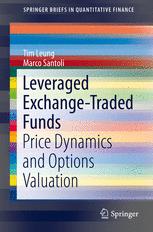

Most ebook files are in PDF format, so you can easily read them using various software such as Foxit Reader or directly on the Google Chrome browser.
Some ebook files are released by publishers in other formats such as .awz, .mobi, .epub, .fb2, etc. You may need to install specific software to read these formats on mobile/PC, such as Calibre.
Please read the tutorial at this link: https://ebookbell.com/faq
We offer FREE conversion to the popular formats you request; however, this may take some time. Therefore, right after payment, please email us, and we will try to provide the service as quickly as possible.
For some exceptional file formats or broken links (if any), please refrain from opening any disputes. Instead, email us first, and we will try to assist within a maximum of 6 hours.
EbookBell Team

4.7
46 reviewsThis book provides an analysis, under both discrete-time and continuous-time frameworks, on the price dynamics of leveraged exchange-traded funds (LETFs), with emphasis on the roles of leverage ratio, realized volatility, investment horizon, and tracking errors. This study provides new insights on the risks associated with LETFs. It also leads to the discussion of new risk management concepts, such as admissible leverage ratios and admissible risk horizon, as well as the mathematical and empirical analyses of several trading strategies, including static portfolios, pairs trading, and stop-loss strategies involving ETFs and LETFs. The final part of the book addresses the pricing of options written on LETFs. Since different LETFs are designed to track the same reference index, these funds and their associated options share very similar sources of randomness. The authors provide a no-arbitrage pricing approach that consistently value options on LETFs with different leverage ratios with stochastic volatility and jumps in the reference index. Their results are useful for market making of these options, and for identifying price discrepancies across the LETF options markets. As the market of leveraged exchange-traded products become a sizeable connected part of the financial market, it is crucial to better understand its feedback effect and broader market impact. This is important not only for individual and institutional investors, but also for regulators.